
Tags
Share
Cold calling can be a daunting task for sales reps. Prospects often hang up right away or are irritated by the call—and that’s if they pick up in the first place.
On the other hand, cold calling can work. Even if success rates aren’t particularly high, it’s a viable option for certain industries and even if it doesn’t immediately result in a won deal, it can help businesses get their foot in the door. So, how can reps who are responsible for cold outreach maximise their chances of success?
There’s no big mystery—the most important tool for successful reps is a well-written cold call script, which guides the conversational flow and reminds them of important talking points to cover. But the perfect script takes careful planning, research, and practice.
Keep reading to learn how to create the best cold call script for common situations, as well as examples and useful tools.

What is a cold call, and what do businesses use them for?
A cold call is the first call a sales rep or agent makes to a potential customer or buyer who has never previously interacted with your company.
It’s a type of prospecting activity (you can also prospect via social media, for example), and the aim is to introduce your business, products, and services to a potential customer. But it’s not just a sales pitch. It’s also a chance to discover more about the prospect’s needs and challenges.
These days, cold calling doesn’t mean going through a random list of phone numbers until you find someone who’s receptive. The process begins with careful research, then building a list of leads whose profiles and activities suggest they’ll be interested in your products.
Cold calling is often combined with other techniques like lead qualification and other sales channels like inbound sales. Because cold calling involves reaching out to people who’ve likely never heard of your business, the goal is not usually to make a sale right away. In most cases, the rep might simply try to engage the prospect to book a meeting or to learn more as an immediate next step.
What are cold call scripts, and why might you need them?
A cold call script is a planned conversational structure for agents and reps to follow when they make unsolicited calls. It guides them through the things they need to say and suggests responses to different things prospects might say, such as objections or tricky questions.
Instead of asking reps to read out a script verbatim, most companies now use customisable templates that act more as rough guidelines. These typically include room for further personalisation based on what the prospect says.
Certain scripts do follow a more typical structure, which ensures consistency (and legal compliance if this is relevant to your business). This may also make it easier to evaluate how the call went afterward, especially if you use Ai-powered cold calling software.
Most scripts include elements like:
A brief introduction
The reason for the call
A request for permission to take up the prospect’s time
Your value proposition
The next steps to take
Now, let’s take a look at the main benefits of using cold call scripts:
Keeps the call on track
A script provides a consistent structure for each call and prevents reps from getting distracted from the goal. It helps remind them of the essential elements they need to mention and pulls them back from going off on tangents or engaging in too much small talk.
Keeps prospects engaged
A good script is designed to make prospects curious about your offering, whether that’s by engaging the prospect with a question or by using a statistic that’s applicable to their industry or business. (“Imagine if you could boost your productivity by up to 30%?”)
If needed, you can build in these “hooks” into the script to help reps who might not be as naturally skilled at captivating prospects’ attention as others.
Shows you did the research
Thorough research before the call means reps already have a good idea of the prospect’s pain points. Of course, not every rep has the time or knows where to start when doing research. Adding these prompts or details to the script lets them know how to tailor the pitch and demonstrate knowledge of the prospect.
For example, “I notice you have offices in London, New York, and Seoul. Our communications solution is ideal for teams working across time zones.”
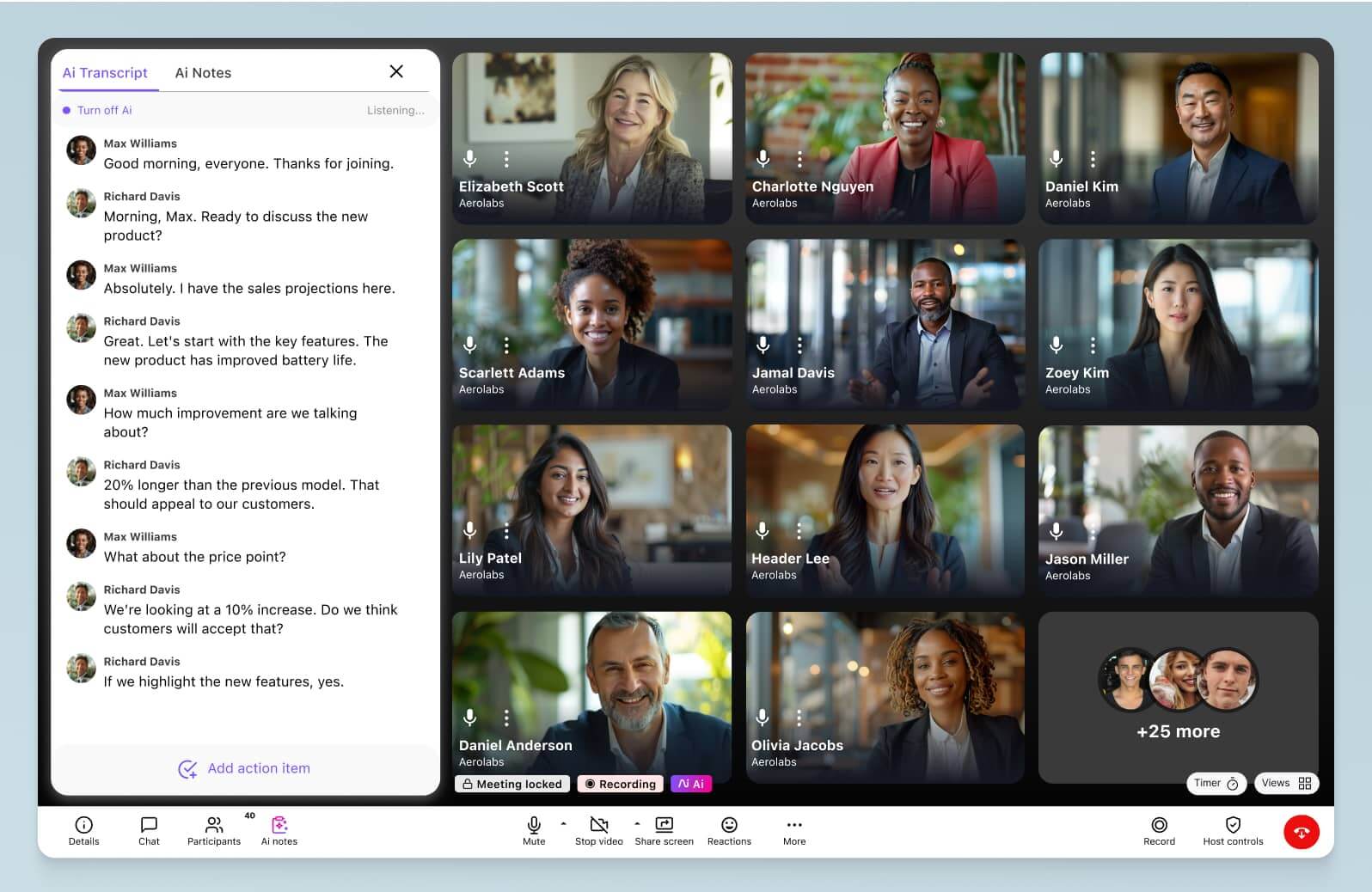
Helps reps handle objections more effectively
Most prospects aren’t receptive to cold calling. Some will block every attempt to engage them—they might even hang up the phone. You can’t necessarily help your sales team with these—but you can help the ones who do get through by providing cold calling scripts that address common objections (for example, what to say to get past gatekeepers).
DIALPAD TIP:
Roleplay sessions can be helpful for getting reps to practice how to handle objections. It’s also worth using call recordings of successful cold calls for training, with good and bad examples of reps’ responses.
5 cold calling script examples
Before we get into our top tips for scripting, let’s look at a few cold call script examples. Of course, every call is different, and there’s no single best cold call script for every conversation, but these are a good starting point and can be customised based on your team’s needs.
Referral-based cold call script
A referral from a mutual friend or well-known business can be the most effective introduction when cold calling.
For example:
- Hi, this is Andrea Lane from ABC Solutions. It seems we have a mutual acquaintance in Paul Chang. He suggested I get in touch with you.
[Prospect recognises the name.]
- Well, Paul’s company has been using our order management system for a few months now, and it’s really improved their processes. He said your business was also looking for a new solution—is that right?
[Prospect says “Yes”.]
- Perfect! May I tell you a little about our product? Or I could pop the details in an email if you prefer.
[Prospect agrees: discuss your solution or send an email, then schedule a follow-up call.]
[Alternatively, the prospect blocks both options: thank them for their time nonetheless.]
Cold call script for navigating gatekeepers
It can be frustrating when reps come up against gatekeepers (receptionists, office managers, and so on) who make it difficult for them to get hold of the relevant person.
Here’s a cold call script template for this scenario:
- Hello, this is Andrea Lane from ABC Solutions. Would it be possible to speak with Sam Cerrone, please?
[Gatekeeper says Sam is out of the office/has asked not to be disturbed.]
- OK, no problem. Would you mind giving me Sam’s direct line so I can try them later?
[Gatekeeper says she isn’t allowed to give out phone numbers.]
- In that case, I wonder if there’s someone else I could speak to in the same team or department.
[Gatekeeper says there’s nobody available at the moment.]
- OK, then I’ll send an email. I believe the address is [email protected]. Is that right?
[Gatekeeper confirms. Thank the gatekeeper for their help.]
DIALPAD TIP:
Make a note of what happened during the call when you complete your after-call work so that other reps know what to expect if they want to contact the same prospect in the future.

Hyper-personalised cold call script
This example shows the conversation a rep might have if they’ve found a conversation starter with the prospect. In this case, they happened to attend the same university. It may be possible to find connections by looking at prospects’ social media accounts, such as their LinkedIn pages.
- Hello, my name’s Andrea. I’m the sales manager at ABC Solutions and a fellow graduate of Birmingham Uni! Small world.
[Prospect is receptive to the conversation: give them more details.]
- I was there from 2006 to 2009, same as you. You did Computer Science, though, right? It must have worked out for you since you’re now the CIO!
[Prospect isn’t interested in small talk: move straight on to the main purpose.]
- I’ve been at ABC Solutions since leaving uni, which brings me to the reason for my call! I was hoping to chat with you about our order management solution. Do you already have a software provider for that?
[Prospect says “No”: ask for a couple of minutes to tell them about your solution.] [Prospect tells you about their current provider: explain why your solution is better.]
- Ah, okay. That’s a popular choice. But our software just had an upgrade and it’s got a few features that XXX doesn’t have. Can I tell you a bit about it?
[Prospect says “Yes”: go ahead.]
[Prospect says “No”: offer to email the details instead and schedule a follow-up call.]
Cold call script when following up on an email
After sending a cold email or product information, it’s vital to follow up promptly.
Reps should politely check that the prospect has received their message, and find out if they’re interested in learning more. Here’s an example:
- Hi Sam, it’s Andrea from ABC Solutions. I just wondered if you’d had a chance to look through the product information I sent you on Tuesday.
[Prospect says “No” or that they need more time.]
- That’s okay, I know it’s a busy time for you. Our product does [brief, one-sentence pitch]. Would you be interested in learning more?
[Prospect asks a question/mentions a feature.]
- I can give you some more info on that now if you have the time, or I can set up a product demo for you—then you can try out the features for yourself.
[Prospect says “Yes please”.]
- Okay, how about next Monday? Would 10am suit you?
[Agree on a time with the prospect and send a confirmation email.]
Voicemail script for when calls go unanswered
When leaving a voicemail, agents and reps must make sure they include all the essential details—and intrigue the prospect enough that they want to call back. Here’s an example cold calling script for this:
- Hello Sam, this is Andrea Lane, sales manager for ABC Solutions. I know you’re really busy with the Christmas season coming up, and that’s actually where I can help. I’d like to tell you about our smart order management system, which automates your processes. It’s helping our other D2C customers save, on average, 4 to 5 hours a week.
If you have a few minutes for a quick conversation, I can give you more details. You can reach me on 01234 567890. I look forward to hearing from you.
DID YOU KNOW?
Dialpad’s voicemail drop feature is perfect for when you need to contact multiple prospects, letting you “drop” pre-recorded messages with a single click.
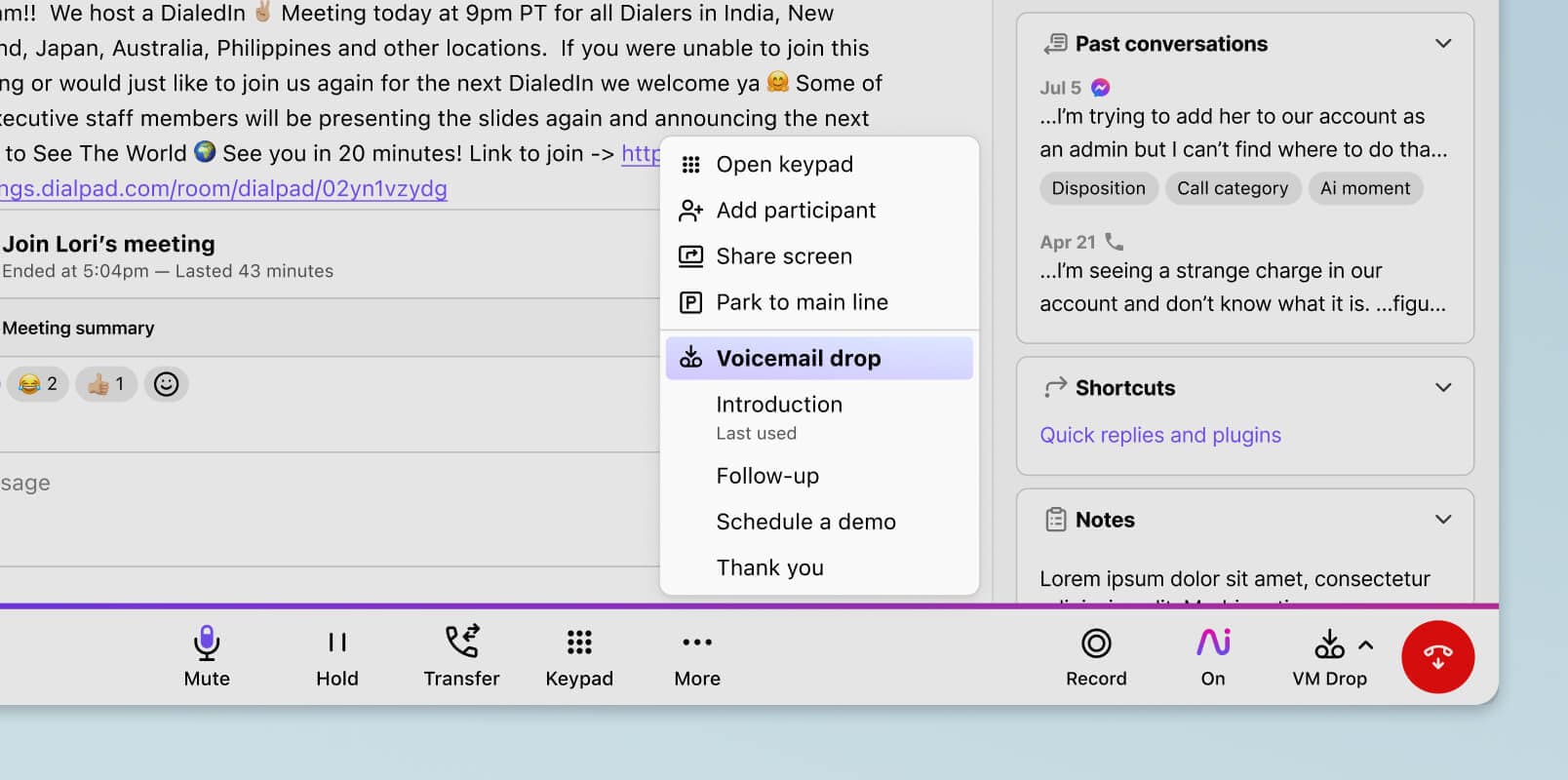
How to create a cold call script that works for your sellers
You could take any of the above script examples and adjust them to fit your purposes, but how do you write a cold call script that genuinely works for your sales team?
Here are some top tips:
Clearly define the goal of your cold calls
The first step in planning sales calls is to make sure everyone is aware of their key objectives.
The overarching goal is to sell your product or service, but the aim of individual calls might simply be to introduce your business and get the prospect to take the next step. This usually involves setting up a meeting, a discovery call, or a product demo.
In cases where prospects are proving hard to engage, reps should strive for smaller, more attainable objectives. For example, if a prospect is busy, the goal might be getting them to agree to another call from you next week.
Meanwhile, non-sales agents might use cold calling for market research, in which case the goal is to find out what potential customers think about your company and its offerings.
Identify the prospects or type of prospects you’ll reach out to
Research is essential to creating good cold calling scripts. But before reps start writing and customising, they need to identify prospects that are likely to be the right fit.
Think about industries whose challenges could be met by your product and target specific verticals. You can also use your CRM and accounting data to identify your most valuable or receptive customers, and then line up prospects with similar attributes.
It’s worth looking for information on company websites and social media, plus any public reports on company finances or acquisitions.
DIALPAD TIP:
The MEDDIC sales methodology is ideal for qualifying prospects, as it identifies their pain points and budget, tells you who has the authority to make a purchase and how the decision process works, and helps you find a champion in the target organisation.
Include a quick and professional introduction
It’s important to keep opening lines snappy, but professional. Reps should clearly state their name and the company they work for, so prospects don’t have to ask. It’s fine to add a polite greeting (such as “how are you today?” or “how’s your week going?”), but these should be brief.
The intro should include a request for permission to take up a few minutes of the prospect’s time and let the prospect know what they’re going to get out of this call, even if it’s just information about a unique new product designed for their industry. Prospects are busy people, and they just want the caller to get on with it, so reps should quickly state the exact purpose of the call.
Leave room for personalisation to create a connection
Adding personal touches to a script helps reps forge a connection with the prospect, making the call seem less “cold”.
There are many ways to make a cold call script more personal. Reps can ask about the prospect’s role at the company, especially if they’ve been there a while or had a recent promotion. (In the UK, a mention of the current weather is a typical ice-breaker.)
Anticipate objections and have responses ready
When you’re writing a cold call script, it’s crucial that you factor in the possibility of objections and ensure that reps have an answer for everything.
If the prospect doesn’t have time to talk, find out when would be better to call or if the prospect can suggest a more suitable contact.
If the prospect already has a solution provided by a competitor, ask their reasons for choosing it and find out what they like and dislike about it. This presents an opportunity to explain how your solution is different, backed up with stats and testimonials—or at least, add some valuable information to your competitor battlecards.
Quantify the value of your solutions
This part isn’t about listing the benefits of your product or service. It’s about quantifying its value in terms of how it can help the prospect specifically.
Your cold calling script should mention how you’ve helped similar companies with these challenges, and explain what makes your solution better than the competition.
Your script should also remind reps to share social proof, such as case studies and testimonials, and ensure they can answer further questions from the prospect. You can always send extra info for them to read at their convenience, so don’t get too bogged down in the details—these will be provided during the next stage.
Make sure the next steps are clearly outlined
So, what is the next stage? If the prospect has shown an interest in what you’re offering, then it’s usually a discovery call or product demo. Reps should suggest a date and time as soon as possible so that they can strike while the iron is hot. Pop this into your (and their) digital calendar.
If the prospect doesn’t want to talk right there and then, arrange to call again at a more suitable time or send them some content and arrange a follow-up call. If they’re really not interested, thank them for their time and ask if there’s another point of contact they can suggest.
How the right software can help with call scripting
Creating good call scripts takes a bit of effort, but don’t worry, there’s plenty of cold call script software that can help you. You could use a cold call script generator or download some templates to get you started.
But it’s not just about writing scripts—tools like Dialpad Sell have lots of other features that can also make cold calling easier for reps.
Ai Live Coach
When a rep makes a cold call, the last thing you want is for them to panic when the prospect objects or asks a tricky question. Dialpad’s Ai Live Coach is designed to help when a sales call goes off-script.
Ai Live Coach pops up helpful notes on the rep or agent’s screen when Dialpad Ai detects certain words or phrases being spoken. Managers can create these cards based on knowledge gleaned from previous interactions.
For example, if prospects often mention a particular competitor, you could set up Ai Live Coach to show talking points about how your solution is better. This would appear whenever the competitor’s name was spoken.
Dialpad also has Ai Live Coach, a tool that lets reps type a quick question during the call and receive an instant answer that’s pulled from on of your company’s connected knowledge sources.
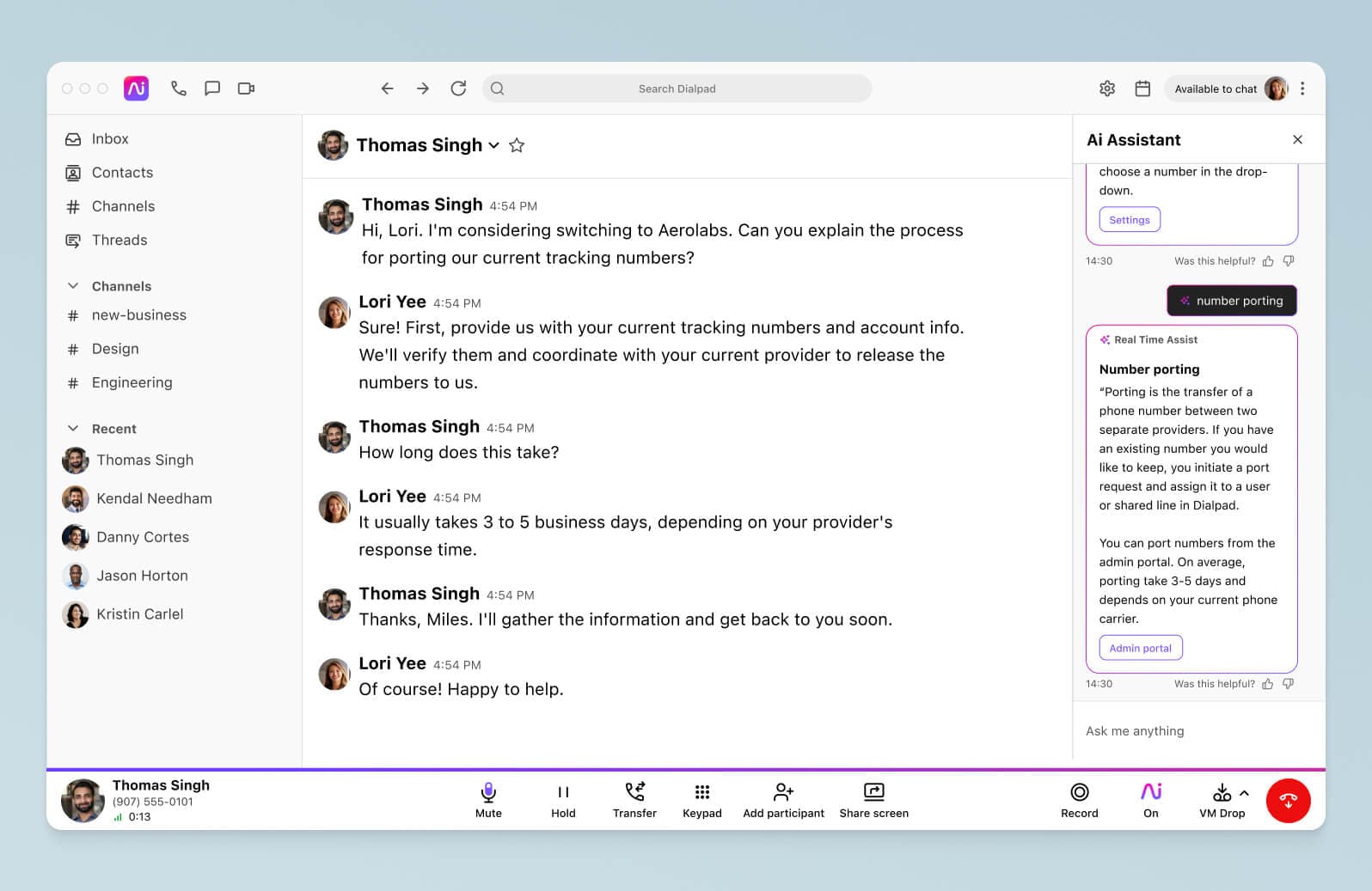
Live sentiment analysis and coaching
With Dialpad Ai, managers and team leaders don’t need to wait until after a call to offer reps guidance. They can see all current calls on the live call screen, with a sentiment analysis marker on each one showing a positive or neutral rating depending on how the conversation is going:
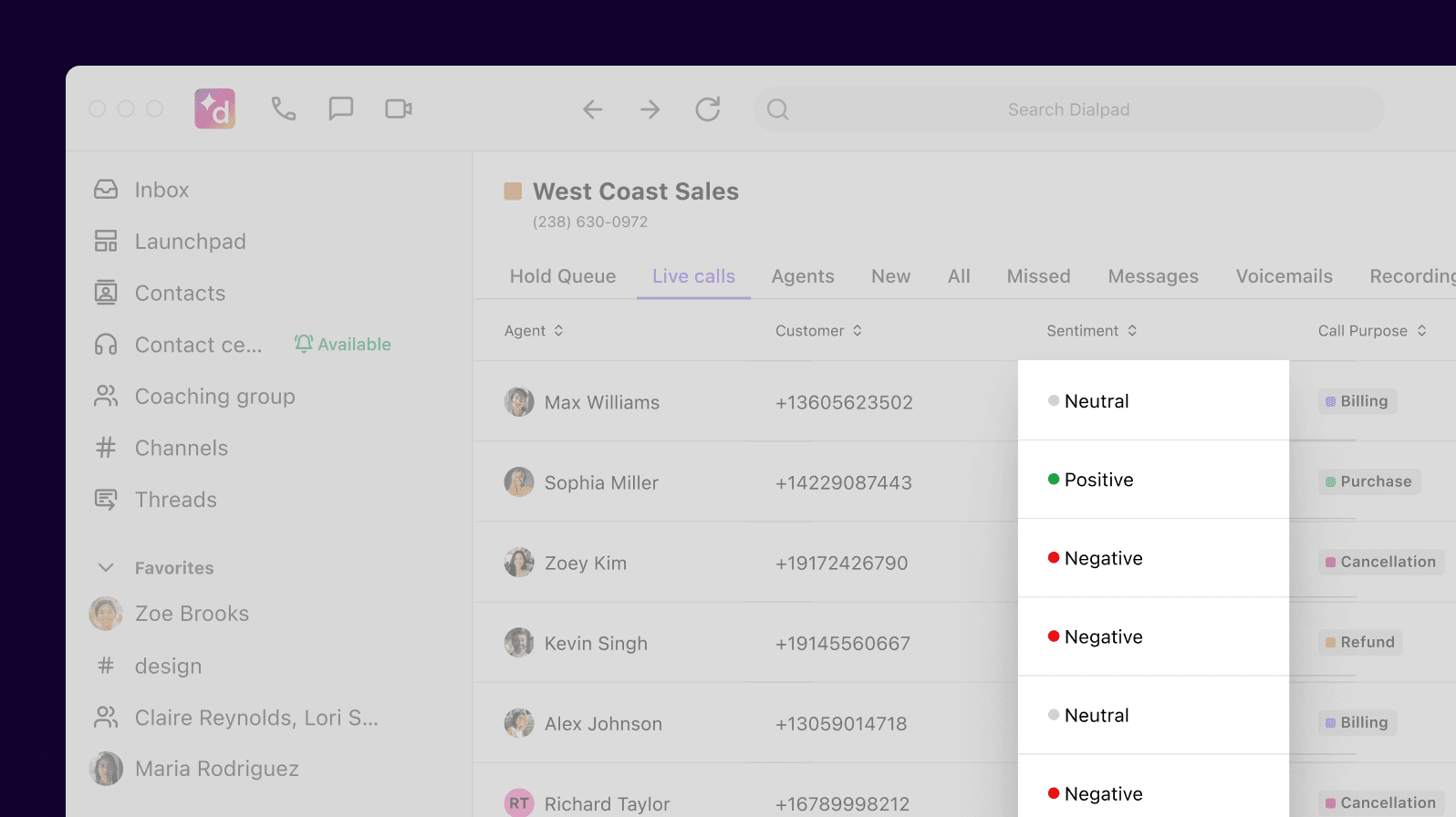
This overview allows supervisors to easily keep an eye on what’s happening across all active calls. If something doesn’t look right, they can click into the real-time call transcript for more detail before deciding to barge in or take over if it’s going drastically wrong and/or the rep isn’t sticking to the script.
DID YOU KNOW:
Dialpad lets you turn recorded calls into coaching playlists for training. You can categorise these recordings to create a library of examples of how—and how not—to carry out a cold call.
Post-call analysis
Post-call analysis is also important for finding out how well your cold call scripts are working and identifying which reps might need a bit more training. Not only can Dialpad record, transcribe, and summarise calls using Dialpad Ai, it also has a feature called Custom Moments, which shows managers how frequently certain keywords or topics come up in calls.
They can then use this analysis to identify common objections and competitor mentions, and update training materials as well as develop better call scripts.
Voicemail drop
In an earlier example, we showed a script to use when a call goes to voicemail. But for high-volume cold outreach teams, it can be extremely time-consuming for reps to recite the whole message each time this happens. With Dialpad’s voicemail drop feature, they don’t have to.
Instead, they can just pre-record a suitable universal message that introduces the company, states the reason for the call, and provides contact details.
When the prospect’s voicemail kicks in, the rep simply “drops” this message with the click of a button and moves on to another call.
These messages won’t be personalised, but they will be consistent and concise. Plus, managers can always analyse call logs to find out how many callbacks happen as a result and which type of messages encourage the most prospects to call back. They can then use this data to help create future scripts.
CRM integrations
Dialpad has many native integrations with popular customer relationship management platforms.
CRM integration is important for cold calling and creating scripts, as it links a sales rep’s two most important tools: their repository of prospect information and the communication tool that makes the calls.
Integrating these two tools makes accessing information about prospects and existing customers easier, especially live during a call.
For example, with Dialpad Sell, reps can make calls directly from within Salesforce, HubSpot, or Copper instead of switching to a different app.
Or, they can make calls from within Dialpad and use a pop-up from their chosen CRM platform, which shows prospect information on their screen during the call:
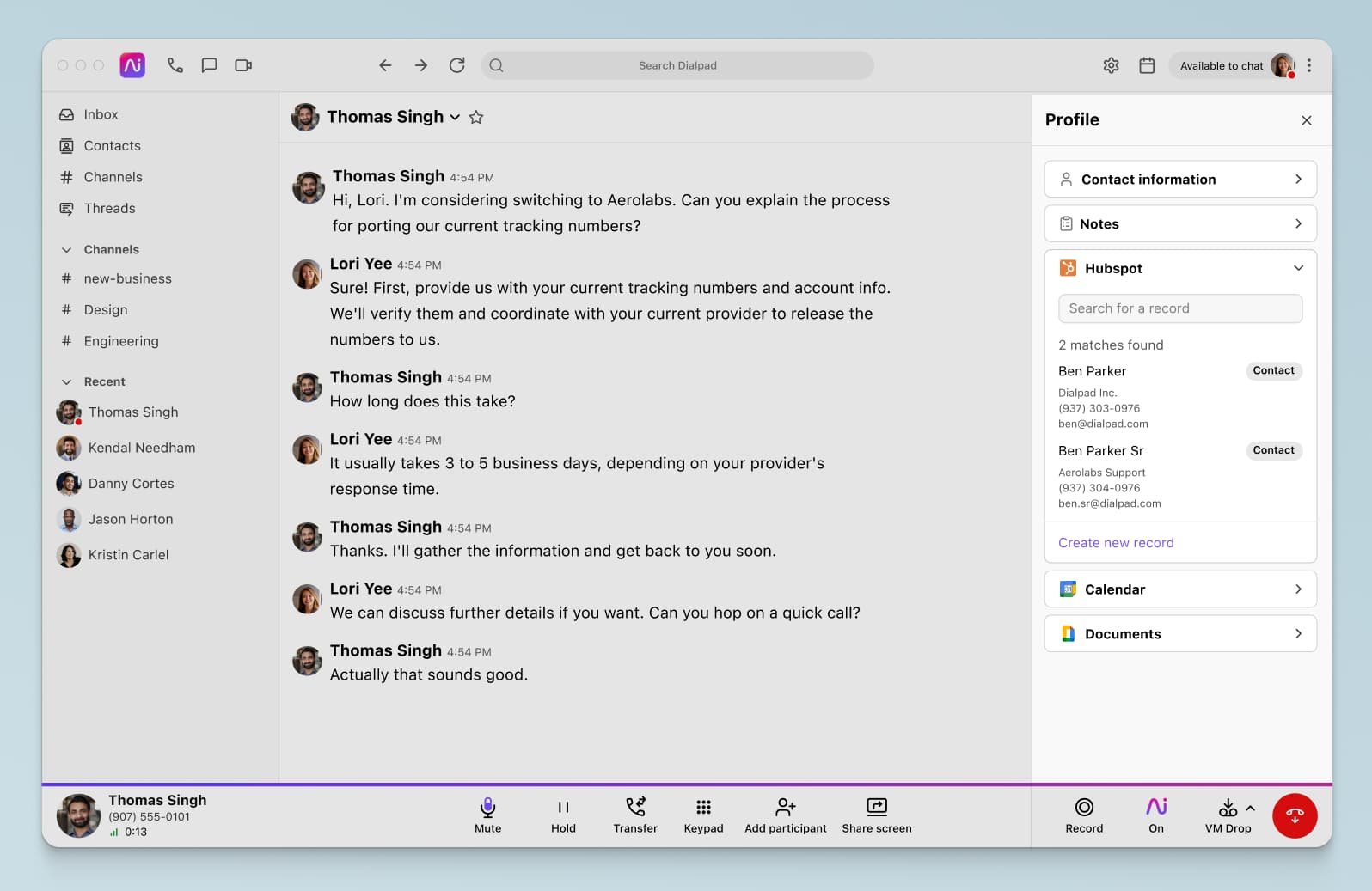
Dialpad also automatically logs calling and SMS activity in the CRM, so reps don’t have to handle manual data entry (and can spend more time making calls).
Power dialler
When there’s a long list of prospects to contact, it doesn’t make sense for reps to dial each number manually—this eats into their productivity and is also more prone to human error.
Power diallers are another time-saving feature for reps. As one call ends, the software automatically dials the next number on your outreach list. (You can also set up your power dialler to automatically move on to the next number if the line is busy or the call goes unanswered.)
With these manual tasks taken care of, reps can spend more time on important work such as researching and qualifying prospects, creating and customising scripts, and having meaningful conversations.
DID YOU KNOW:
People are typically more likely to answer calls that come from a local number. With Dialpad Sell, you can give your business a local virtual number that shows up on your caller ID.
6 Cold calling best practices to make the most of your scripts
Now you know how to create a good script, you’ve looked at some examples, and we’ve introduced Dialpad’s relevant tools. What else can you do to ensure cold calling is successful?
Here are a few more tips to apply alongside your scripts.
1. Make sure prospects are qualified
There’s little point in your reps talking to people who aren’t a good fit for your product or service and who won’t be interested. It’s vital that your team spends its time wisely, and identifying viable prospects gives reps something to work with.
Whether your sellers are responsible for qualifying their own leads or you have revenue team members who do this task, your cold calling prospects should ideally have the potential to purchase your products or services. For example, if you’re selling landscaping services for commercial properties, your reps shouldn’t be calling residential landline numbers.
It’s also important to make sure your team is familiar with the rules around GDPR and cold calling so that they only contact prospects who’ve given consent. Otherwise, your company risks severe penalties for non-compliance.
2. Do your research
Once you have a list of potential prospects, reps should spend time doing some further research so they can personalise their cold calling scripts and find a way to connect. One way is to check out prospects’ LinkedIn profiles to find broad talking points and common interests.
One thing that many reps overlook is pronunciation—LinkedIn is a great resource because many users add helpful audio clips of them pronouncing their name, their pronouns, and so on. Reps should be familiar with these details when they make the call. Otherwise, they risk sounding unprofessional and getting the call off to a bad start.
Once the rep makes the call, the BANT selling methodology can help them qualify these potential leads by asking about their budget, authority, needs, and timeline. If a prospect doesn’t meet the criteria, it might be better to move on to someone who does.

3. Practise your cold calling scripts
It’s one thing to write a great script, but another to deliver it effectively. Sales reps and agents are typically good communicators, but it still takes practice to get it just right.
By rehearsing out loud, they’ll soon be able to read the script without hesitation or tripping over the words. After doing this multiple times, they’ll also remember most of it without looking at the paper or screen, which makes conversations sound more natural.
Reps should also roleplay scenarios to help them answer unexpected questions and handle objections. Practice reinforces the need to remain professional and polite, even if the prospect is coming across as rude or stand-offish.
4. Treat each prospect as an individual
Although cold calling scripts provide a standard structure for all calls, it’s important to remember that each prospect is different—and conversations will take different turns each time.
Reps can customise scripts from the start using their research into the prospect and their organisation—for example, how the product has helped similar businesses. Regardless, listening is equally important, and if given the opportunity, they should always ask for details like the prospect’s unique challenges and pain points.
Reps should feel comfortable deviating from the script if they find an unexpected connection.
DIALPAD TIP:
Personalising outreach can sometimes also mean tailoring your approach to the prospect’s preferred method of contact. If they’re not keen on phone calls, ask if they’d be happier with email, SMS, or even a video meeting.
5. Have a clear “close” or next step
In the case of a cold call, “closing” doesn’t necessarily mean getting the prospect to make a purchase or sign up for your service. This is only the first stage of the buyer’s journey, providing an introduction to your company and opening a window of opportunity.
These calls should focus on smaller “closes,” such as booking a follow-up call after sending the prospect some information or arranging a virtual demo.
Even getting the prospect to talk for a few minutes counts as a step in the right direction. If the rep leaves a message or uses voicemail drop, the “close” is to entice the prospect to call back.
In the event that the prospect is completely uninterested, the next step is to thank them for their time, and politely ask if they can share their reasons for not going ahead. This data is valuable for sales, marketing, and product teams.
6. Follow up on every call
Following up can mean several things. The rep might try again after an initial call went unanswered, or they might follow up after leaving a voicemail or sending information via email. They might call a prospect back at an agreed time because they were previously too busy to talk.
The aim of the follow-up call is to move the prospect on to the next step in your sales process. Hopefully, they’ll be keen to learn more, and progress to the relevant rep for a discovery call, meeting, or walk-through.
If a prospect agrees to a call-back of any kind, it’s a good idea to send them a confirmation email (so both parties have it in writing). Reps should remember to add this to their calendars and confirm that the prospect is open to receiving a calendar invite or reminder.
Support your cold call scripts with Dialpad Ai
Cold calling isn’t going anywhere—it’s just getting smarter. Reps now have personalised cold call scripts, digital calendars to book callbacks, and automated reminders to follow up.
But these aren’t the only tools that make cold calls easier. Solutions like Dialpad Sell are designed to guide reps to deliver more successful pitches by providing automated coaching and helpful content—at scale.
Equip your reps with the tools they need to create, customise, and rehearse cold calling scripts. See how sales teams are using Dialpad Sell to make their cold calling efforts a success.
Give your reps more than just cold call scripts
Get a hands-on look at Dialpad Sell with a demo, or take a self-guided interactive tour of the app first!

